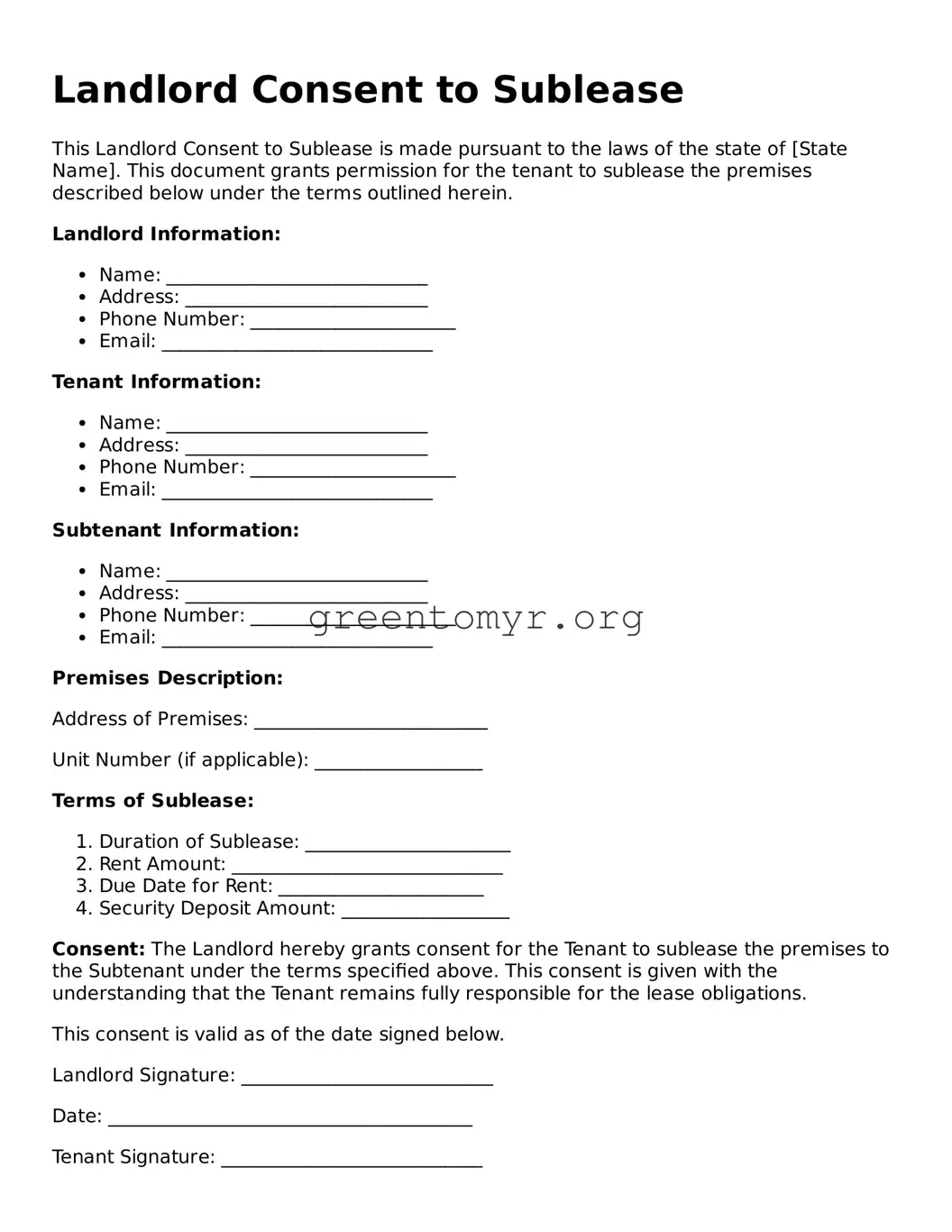Landlord Consent to Sublease
This Landlord Consent to Sublease is made pursuant to the laws of the state of [State Name]. This document grants permission for the tenant to sublease the premises described below under the terms outlined herein.
Landlord Information:
- Name: ____________________________
- Address: __________________________
- Phone Number: ______________________
- Email: _____________________________
Tenant Information:
- Name: ____________________________
- Address: __________________________
- Phone Number: ______________________
- Email: _____________________________
Subtenant Information:
- Name: ____________________________
- Address: __________________________
- Phone Number: ______________________
- Email: _____________________________
Premises Description:
Address of Premises: _________________________
Unit Number (if applicable): __________________
Terms of Sublease:
- Duration of Sublease: ______________________
- Rent Amount: _____________________________
- Due Date for Rent: ______________________
- Security Deposit Amount: __________________
Consent: The Landlord hereby grants consent for the Tenant to sublease the premises to the Subtenant under the terms specified above. This consent is given with the understanding that the Tenant remains fully responsible for the lease obligations.
This consent is valid as of the date signed below.
Landlord Signature: ___________________________
Date: _______________________________________
Tenant Signature: ____________________________
Date: _______________________________________
Subtenant Signature: _________________________
Date: _______________________________________
